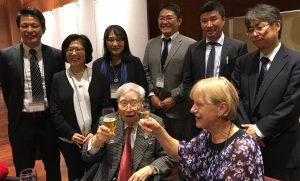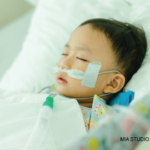With no subspecialty training in rheumatology, Dr. Kawasaki was an outlier whose work was not initially embraced by the strict, hierarchical academic pediatric establishment of 1960s’ Japan. But he was scrupulous in his pursuit of answers to this mysterious syndrome.
In each file he traced a little outline of a child and drew where the rash was on all 50 patients. He also included a handwritten timeline of symptoms—when the eyes got red, when the rash appeared, when the lips and tongue became red and swollen, as well as when all symptoms subsided and when the child smiled. “He even had biopsies of the skin from the fingertips,” Dr. Burns says. “Everything is there.”
Kawasaki disease was thought to be a self-limiting diagnosis with a benign course until Noboru Tanaka, the head of pathology at the hospital where Dr. Kawasaki worked, performed an autopsy on a child who had been diagnosed with Kawasaki disease.
“Dr. Tanaka’s autopsy demonstrated the child had died of a coronary artery thrombosis, establishing for the first time a connection between this mucocutaneous febrile illness and its pathomneumonic vascular finding,” says Dr. Seo.
It wasn’t until a decade later that clinicians began to accept that a hallmark of the disease was cardiovascular involvement. “I think it was a real psychological twist for [Dr. Kawasaki] to accept his disease could cause permanent harm and death in children,” says Dr. Burns, adding that the patients in his published paper all got better without any treatment.
In the ensuing years, there have been episodic outbreaks of Kawasaki disease in Japan and the U.S., and it became recognized as an independent syndrome, as well as the leading cause of acquired heart disease among children in these countries. The cause of these outbreaks is still unclear, although an investigation of environmental factors in the U.S. and Japan has indicated that a shift in wind direction, bringing with it possible pathogens, may induce the response in a particular host.
Generosity of Spirit
Dr. Kawasaki was not only renowned for his dedication and attention to detail as a physician, but also for his generosity of spirit. At the third International Kawasaki Disease Symposium in Tokyo in 1988, Dr. Kawasaki gave each speaker a small copper statue of a child cradling a lamb that he said symbolized caring for others. Thomas J. A. Lehman, MD, retired chief of pediatric rheumatology at the Hospital for Special Surgery, New York City, still has his and regards it with great fondness.


